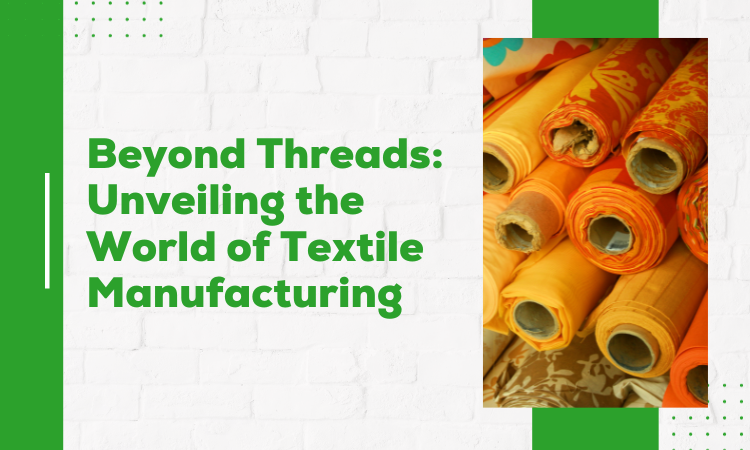Table of Contents
Introduction
Step into the fascinating world of textile manufacturing as we go beyond the threads and unravel the intricate process behind creating the fabrics we wear every day. Discover the secrets of fabric manufacturers as they weave together innovation, craftsmanship, and sustainability. From fabric suppliers to bamboo clothing manufacturers and denim manufacturers, this blog post explores the dynamic industry that powers our fashion-forward world. Welcome to the captivating journey that lies beneath the surface of your favorite garments.
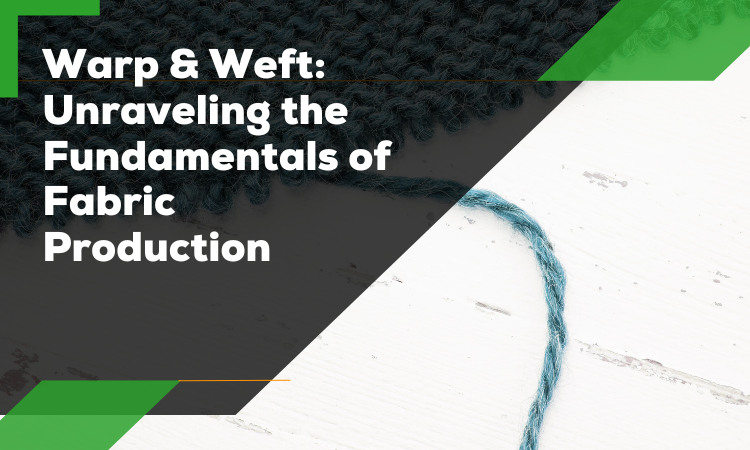
1. Warp & Weft: Unraveling the Fundamentals of Fabric Production
Ever wondered how the vibrant tapestry of fabrics adorning our lives comes into being? The magic lies in the intricate dance of warp and weft, the fundamental pillars of fabric production. Let’s embark on a journey through this textile wonderland, weaving together the threads of knowledge:
- The Fiber Symphony: At the heart of every fabric lies a chorus of fibers. Cotton, the ever-reliable mainstay, dances with the luxurious softness of silk, the sturdy strength of denim, and the sustainable allure of bamboo. Each fiber brings its unique melody to the fabric’s composition, influencing its texture, drape, and performance.
- Spinning the Yarn: From fluffy bundles to smooth strands, fibers undergo a masterful transformation through the art of spinning. This process stretches, twists, and aligns the fibers, creating the yarn – the building block of fabric. The thickness and twist of the yarn determine the fabric’s weight, breathability, and durability.
- Weaving the Web: Now comes the stage where warp and weft take center stage. The warp threads, stretched taut, become the foundation, while the weft threads, woven in and out, create the intricate tapestry. Different weaving techniques, from the simple plain weave to the complex Jacquard patterns, dictate the fabric’s texture, strength, and visual appeal.
- Finishing Touches: The raw fabric is just the first act. Finishing processes like dyeing, printing, and coating add the final flourish. Dyes imbue fabrics with vibrant hues, prints add artistic flair, and coatings enhance properties like water resistance or fire retardancy. These finishing touches complete the fabric’s transformation, ready to adorn our world.
- Beyond the Basics: The world of fabric production extends far beyond these core principles. Modern technology has introduced innovations like knit fabrics, non-wovens, and performance fabrics, each with unique properties and applications. Understanding these advancements allows textile manufacturers to cater to diverse needs and push the boundaries of fabric possibilities.
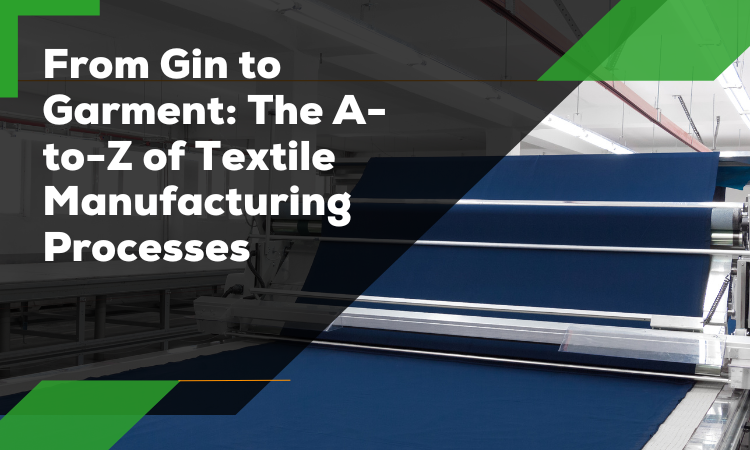
2. From Gin to Garment: The A-to-Z of Textile Manufacturing Processes
Ever wondered how a fluffy cotton ball transforms into your favorite pair of jeans? The journey from gin (raw cotton) to garment is a fascinating saga, a tapestry woven with intricate steps and meticulous attention to detail. Let’s unravel this process, letter by letter:
A – Arrival: The journey begins with bales of gin arriving at the textile mill. These fluffy bundles are sorted, graded for quality, and meticulously weighed.
B – Baling & Blending: Gin undergoes a baling process to loosen its fibers and prepare it for blending. Different types of cotton, or even other natural or synthetic fibers, are often blended to achieve specific fabric properties.
C – Carding & Combing: Carding machines transform the fluffy mass into fine, aligned fibers, removing impurities and short strands. Combing further refines the fibers, creating a smoother, more uniform sliver called “roving.”
D – Drawing & Doubling: The roving is drawn and doubled, stretching and aligning the fibers further, creating a thicker, stronger strand called “yarn.” The thickness and twist of the yarn will determine the final fabric’s weight and texture.
E – Spinning: The yarn takes shape on spinning machines, where the drawn and doubled roving is twisted and wound onto bobbins. This intricate dance of stretching and twisting creates the yarn’s final strength and structure.
F – Weaving/Knitting: Now comes the magic of fabric formation. Yarns are woven on looms, interlacing warp (vertical) and weft (horizontal) threads to create the fabric’s structure. Knitting, with its looped stitches, offers another distinct fabric construction.
G – Greige & Finishing: The woven or knitted fabric, still in its natural, unbleached state, is called “greige.” This fabric undergoes a series of finishing processes like bleaching, dyeing, printing, and coating, adding color, patterns, and functional properties like water resistance or fire retardancy.
H – Inspection & Quality Control: Every step is meticulously inspected throughout the process, ensuring fabric quality and consistency. Rigorous testing guarantees adherence to specific standards and customer specifications.
I – Cutting & Sewing: The finished fabric is cut into panels according to garment patterns. Skilled seamstresses stitch these panels together, using specialized techniques to create the final garment form.
J – Embellishment & Trims: Buttons, zippers, labels, and other embellishments are added to complete the garment, adding functionality and aesthetic appeal.
K – Packing & Shipping: The finished garment is meticulously inspected, folded, and packed for shipping, ready to embark on its journey to store shelves or customer doorsteps.
L – Label to Life: From gin to garment, each step is a testament to human ingenuity and technological advancement. So, the next time you slip on your favorite shirt, remember the incredible journey it has taken, a story woven into every thread.
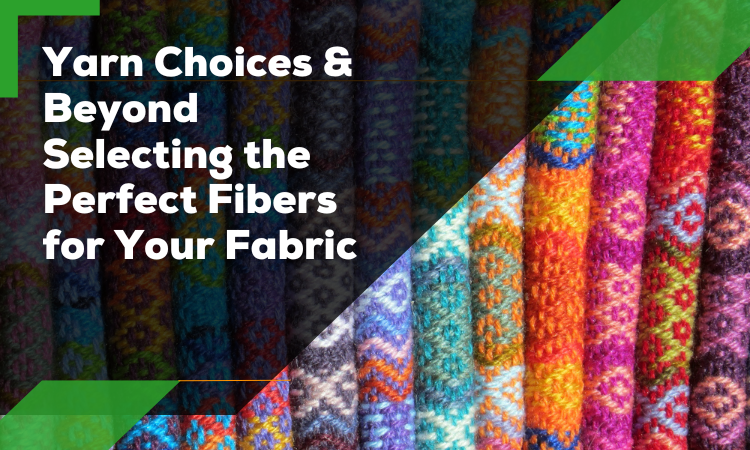
3. Yarn Choices & Beyond: Selecting the Perfect Fibers for Your Fabric
In the vibrant tapestry of fabric creation, the choice of yarns is the first brushstroke, setting the tone for the final masterpiece. But with a dizzying array of natural and synthetic fibers at your fingertips, choosing the perfect ones can feel like navigating a textile maze. Fear not, fabric designers and manufacturers! Let’s unravel the secrets of yarn selection and weave the ideal fabric for your vision.
- Know Your Needs: Before diving into the fiber buffet, consider the fabric’s purpose and desired characteristics. Will it be a lightweight, breathable summer dress? Or a sturdy, weather-resistant jacket? Identifying the end-use will guide you towards fibers that excel in specific areas like strength, comfort, or drape.
- Natural Allure: For those seeking comfort and sustainability, natural fibers like cotton, linen, and bamboo offer a soft touch and eco-friendly appeal. Cotton is a perennial favorite, known for its breathability and versatility, while linen adds a luxurious drape and natural antibacterial properties. Bamboo, the rising star, boasts amazing softness, moisture-wicking abilities, and a sustainable edge.
- Synthetic Strength: Don’t underestimate the power of synthetics! Polyester, nylon, and acrylic offer unmatched durability, wrinkle resistance, and weatherproofing. Blending them with natural fibers creates fabrics that retain their shape, resist stains, and perform flawlessly in demanding conditions.
- Performance Powerhouse: For activewear or specialized applications, seek out high-tech fibers like spandex for elasticity, Cool Max for moisture management, or fire-retardant fibers for safety. These performance-driven yarns add a specific functionality that elevates the fabric’s capabilities.
- Blending Harmony: Don’t be afraid to mix and match! Blending different natural and synthetic fibers can create fabrics that combine the best of both worlds. Cotton and polyester blends offer wrinkle-resistant comfort, while wool and nylon blends provide warmth and durability. Experimenting with blends unlocks a wider range of possibilities.
- 6. Sustainability Spotlight: In today’s eco-conscious world, choosing sustainable fibers is more than just a trend, it’s a responsibility. Opt for organic cotton, recycled polyester, or bamboo for a guilt-free conscience and a fabric that’s gentle on the planet.
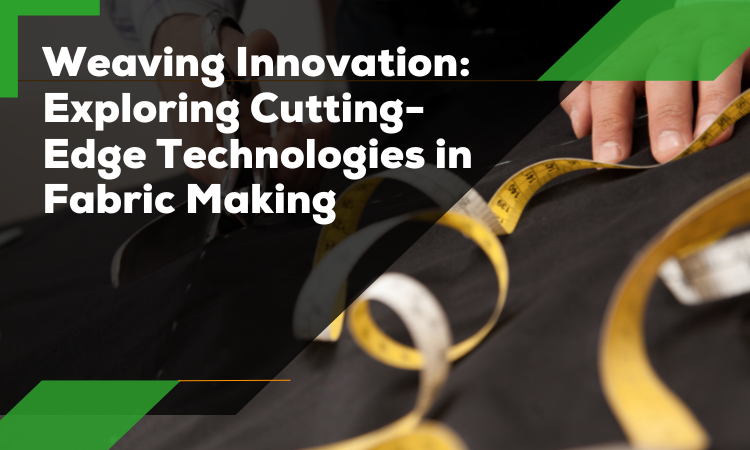
4. Weaving Innovation: Exploring Cutting-Edge Technologies in Fabric Making
The world of fabric is no longer confined to traditional looms and age-old techniques. Innovation is weaving a vibrant new tapestry, transforming the textile industry with cutting-edge technologies that redefine comfort, performance, and sustainability. Let’s peek into this futuristic loom and explore some game-changing advancements:
- Nano-Revolution: Tiny particles, big impact! Nanotechnology is weaving its magic into fabrics with self-cleaning properties, enhanced durability, and even stain resistance. Imagine a shirt that repels dirt and spills, or a pair of jeans that never fade. The possibilities are endless!
- Digital Threads & Smart Fabrics: Weaving with digital threads is no longer science fiction. Embedded sensors and microchips transform fabrics into smart textiles that monitor your health, adjust temperature, and even interact with your environment. Imagine a dress that adapts to your body temperature for ultimate comfort, or a jacket that charges your phone with its kinetic energy. The future of wearable technology is literally woven into the fabric!
- 3D Weaving & Beyond Flatness: Say goodbye to limitations! 3D weaving technology allows for the creation of complex, three-dimensional structures, opening up a whole new realm of possibilities for medical implants, protective gear, and even architectural applications. Imagine a prosthetic limb woven with intricate muscle-like structures, or a building façade that self-regulates temperature and light. The future of fabric is no longer flat, it’s taking shape in 3D!
- Bio-fabrication & Nature’s Alchemy: Nature is the ultimate innovator, and the textile industry is taking notice. Bio-fabrication harnesses the power of microbes and fungi to create sustainable fabrics from organic materials like cellulose and algae. Imagine a jacket grown from mushrooms, or a dress woven from spider silk. The future of fabric is taking a page from nature’s playbook, with sustainability at its core.
- Customization & Personalization: No more off-the-rack solutions! Advances in digital printing and laser cutting allow for on-demand customization, catering to individual preferences and body shapes. Imagine ordering a shirt with your unique design printed on it, or jeans perfectly tailored to your measurements. The future of fabric is bespoke, embracing individuality and self-expression.
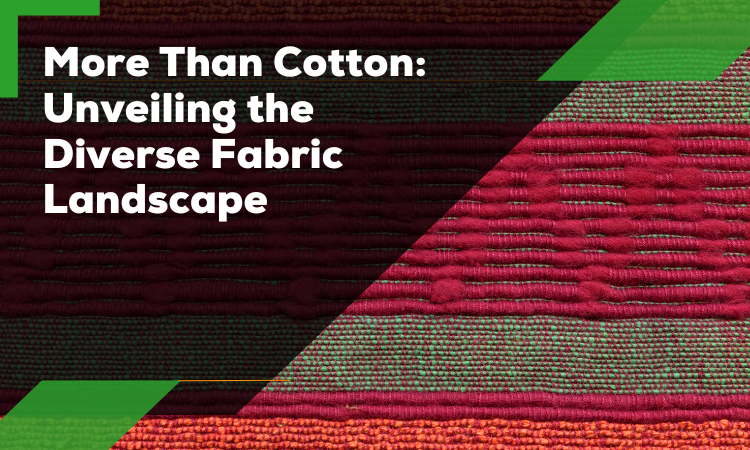
5. More Than Cotton: Unveiling the Diverse Fabric Landscape
Cotton, the undisputed king of comfort, has reigned supreme in our wardrobes for centuries. But the textile kingdom is far richer, teeming with diverse fabrics, each with its own unique story to tell. So, let’s dethrone the cotton monopoly and embark on a journey to explore the vibrant tapestry of fabric possibilities!
- Silky Splendor: Step into luxury with silk, the epitome of elegance and softness. Its natural sheen and drape make it a fabric fit for royalty, while its breathability and temperature regulation ensure ultimate comfort. From delicate scarves to opulent gowns, silk adds a touch of timeless sophistication to any outfit.
- Linen’s Cool Embrace: Escape the summer heat with linen, the natural champion of breathability and coolness. Its loosely woven structure allows air to circulate freely, making it ideal for breezy summer dresses and relaxed shirts. Linen’s natural antibacterial properties and eco-friendly credentials add to its charm.
- Bamboo’s Sustainable Touch: Embrace the eco-conscious choice with bamboo fabric, a rising star in the sustainable textile industry. Soft as silk, yet stronger than cotton, bamboo boasts excellent moisture-wicking properties and a natural antibacterial edge. From activewear to cozy loungewear, bamboo offers comfort and sustainability in one beautiful package.
- Denim’s Rugged Rebellion: Denim, the fabric of cowboys and rebels, has transcended its rugged roots to become a fashion staple. Its timeless appeal lies in its durability, versatility, and ability to conform to individual styles. From classic jeans to edgy jackets, denim offers a canvas for self-expression and a touch of timeless coolness.
- Performance Powerhouses: Beyond comfort and aesthetics lies a world of high-performance fabrics. Polyester and nylon offer unmatched wrinkle resistance and weatherproofing, while spandex adds elasticity for activewear. These fabrics push the boundaries of functionality, ensuring peak performance in demanding situations.
- Blending Harmony: Don’t limit yourself to single fibers! Blending different fabrics creates unique combinations that combine their best qualities. Cotton and polyester blends offer wrinkle-free comfort, while wool and nylon blends provide warmth and durability. Experimenting with blends unlocks a wider range of possibilities for your fabric creations.
6. Sustainability Spotlight: Eco-Friendly Fabrics for a Greener Future
The fashion industry, while captivating our senses with vibrant colors and trendy designs, often casts a long shadow of environmental concerns. But a green revolution is weaving its way through the textile landscape, with eco-friendly fabrics emerging as the threads of a sustainable future. Let’s shine a spotlight on some of these fabric heroes, champions of both style and sustainability:
- Organic Cotton: The king of comfort gets a green makeover! Organic cotton, grown without harmful pesticides or synthetic fertilizers, minimizes environmental impact while ensuring the same soft touch and breathability we love. From t-shirts to jeans, organic cotton offers a guilt-free comfort zone for your wardrobe.
- Recycled Polyester: Don’t send plastic bottles to the landfill, turn them into fabulous fabrics! Recycled polyester, woven from post-consumer waste, gives a second life to plastic while reducing reliance on virgin materials. From activewear to swimwear, recycled polyester offers performance and sustainability in one stylish package.
- Hemp’s Humble Heroism: Don’t underestimate the power of hemp! This versatile plant requires minimal water, grows quickly, and absorbs carbon dioxide, making it a champion for the environment. Hemp fabrics are naturally strong, breathable, and even have antibacterial properties. From jeans to jackets, hemp offers durability and sustainability in equal measure.
- Tencel’s Sustainable Symphony: Born from wood pulp, Tencel™ is a fabric that sings a sweet melody for the planet. Its closed-loop production process minimizes water and chemical usage, while its smooth texture and natural drape make it a luxurious alternative to traditional materials. From dresses to bedding, Tencel™ offers comfort with a conscience.
- Bamboo’s Blushing Beauty: Soft as silk, strong as bamboo, this sustainable superstar is taking the fashion world by storm. Bamboo fabric grows quickly without pesticides, requires minimal water, and biodegrades readily. Its natural antibacterial properties and moisture-wicking abilities make it ideal for activewear and loungewear alike. From socks to shirts, bamboo whispers comfort and sustainability in every fiber.

7. Ethical Sourcing & Fair Trade: Ensuring Transparency in the Textile Chain
The vibrant tapestry of our wardrobes often hides a darker side – a tangled web of unethical practices and unfair labor conditions lurking within the textile supply chain. But a wave of conscious consumers and ethical manufacturers is shedding light on these shadows, weaving a brighter future with threads of transparency and fair trade. Let’s unravel the importance of ethical sourcing and fair trade in the textile industry:
- Unmasking the Hidden Costs: The true price of a garment often goes beyond the tag. Cheap clothes often come at the expense of human well-being and environmental degradation. Child labor, unsafe working conditions, and unfair wages are just some of the dark secrets hidden in opaque supply chains.
- Ethical Sourcing: A Beacon of Change: Choosing ethically sourced fabrics means choosing suppliers who prioritize fair labor practices, environmental sustainability, and transparency. Look for certifications like Fair Trade or GOTS (Global Organic Textile Standard) to ensure your fabrics are woven with ethical values.
- Fair Trade: Empowering the Hands that Weave: Fair trade practices go beyond just sourcing. It’s about building partnerships with farmers and workers, ensuring fair wages, safe working conditions, and community development. By supporting fair trade initiatives, you empower the hands that weave your clothes, giving them a voice and a rightful share in the value chain.
- Transparency: Shining a Light on the Shadows: Opacity fuels unethical practices. Demanding transparency from your clothing brands and fabric suppliers is crucial. Ask questions about their sourcing practices, labor standards, and environmental policies. Knowledge is power, and informed consumers can drive positive change.
- Beyond Certifications: Building Conscious Consumerism: Don’t rely solely on certifications. Research brands, engage with them, and seek out those who actively promote ethical practices and fair trade initiatives. Your purchasing power can be a powerful tool for change, guiding the industry towards a more responsible future.
8. From Mill to Market: Understanding the Textile Supply Chain & Distribution
The journey of a garment, from a fluffy cotton ball to a stylish shirt on your rack, is a fascinating odyssey through the intricate labyrinth of the textile supply chain. But for most of us, this intricate dance of fibers and fabrics remains a mystery. So, let’s peel back the layers and unveil the captivating journey of a garment, from mill to market:
- The Seed of Style: The story begins with the humble seed, be it cotton, flax, hemp, or a blend of natural and synthetic fibers. Farmers cultivate these crops, nurturing them with care until they’re ready for harvest.
- Ginning & Baling: The harvested fibers undergo a process called “ginning” to separate the fluffy bolls from the seeds. These fibers are then baled and transported to textile mills, where the magic truly begins.
- Spinning a Yarn: At the mill, the fibers are spun into yarn, the building block of fabric. Spinning machines stretch, twist, and align the fibers, creating threads of varying thickness and texture, each destined for a specific purpose.
- Weaving the Canvas: The spun yarn then enters the realm of loom or knitting machines. Here, the warp and weft threads interlace, forming the intricate tapestry of fabric. Different weaving techniques and knitting patterns create diverse textures, from the smooth drape of silk to the rugged charm of denim.
- Finishing Touches: The raw fabric then undergoes a series of finishing processes like dyeing, printing, and coating. These add color, patterns, and functional properties like water resistance or fire retardancy, transforming the fabric into a functional masterpiece.
- Cutting & Stitching: The finished fabric is meticulously cut into panels based on garment patterns. Skilled seamstresses then stitch these panels together, adding buttons, zippers, and embellishments to bring the garment to life.
- Quality Control & Inspection: Every step in this journey is subject to rigorous quality control checks. Inspectors ensure every garment meets the desired standards and specifications before it embarks on its next chapter.
- Distribution & Warehousing: Now, the journey shifts from the factory floor to the distribution network. Wholesalers and retailers purchase the garments, transporting them to warehouses and finally, to store shelves across the globe.
- The Final Act: Market & Consumers: The final stage unfolds in stores and online marketplaces, where the garment awaits its ultimate destination – your wardrobe! Consumers choose the garments that resonate with their style and needs, completing the journey from seed to style statement.

9. Quality Control & Testing: Guaranteeing Excellence in Every Thread
In the vibrant tapestry of textile manufacturing, quality control is not just a thread; it’s the golden ribbon woven into every fabric, ensuring excellence in every meter. It’s the silent guardian standing between a beautiful garment and a dissatisfied customer, the vigilant eye that safeguards the reputation of a brand. Let’s delve into the world of quality control and testing, appreciating the meticulous steps that guarantee your clothes are not just stylish, but also reliable.
- From Fiber to Fabric: Even before the first thread is spun, quality control weaves its magic. Fibers are meticulously inspected for impurities, color variations, and strength. This ensures only the finest materials make it to the production line, setting the foundation for a flawless fabric.
- Weaving the Watchful Eye: As the yarns dance on the loom, vigilant eyes monitor every thread, ensuring warp and weft interlace flawlessly. Color consistency, pattern accuracy, and fabric weight are meticulously checked, ensuring the final product matches the intended design perfectly.
- Finishing Touches, Flawless Results: Dyeing, printing, and coating processes are not just about aesthetics; they’re also crucial quality checkpoints. Colorfastness, adhesion, and dimensional stability are tested rigorously, guaranteeing your clothes retain their vibrancy and shape wash after wash.
- Strength in Every Stitch: Seams are the unsung heroes of garments, holding everything together. Quality control ensures seams are strong, even, and free of defects. Rigorous testing for tear strength and stitch integrity guarantees your clothes can withstand the test of time and movement.
- Beyond the Garment: Accessories & Trims: Buttons, zippers, and other embellishments are not just decorative; they’re functional elements that need to perform. Quality control scrutinizes their strength, durability, and functionality, ensuring every detail meets the highest standards.
- Testing for Performance & Safety: For specialized fabrics, quality control goes beyond aesthetics. Flame retardancy, water resistance, and UV protection are tested in specialized labs, guaranteeing the fabric performs its intended function flawlessly.
- The Final Seal of Approval: After rigorous inspections and tests, only garments that meet the stringent quality standards receive the final stamp of approval. This seal of excellence guarantees you’re receiving a product that’s not just beautiful, but also reliable, durable, and safe.
10. Beyond Mass Production: Niche Textile Manufacturing & Customization
For decades, the textile industry hummed to the tune of mass production, churning out generic garments in vast quantities. But the tide is turning, and a new melody is rising: niche textile manufacturing and customization. This shift is not just a trend; it’s a revolution, empowering individuals and brands to break free from cookie-cutter fashion and weave stories of individuality into every thread.
- Small Batch Beauty: Niche manufacturers are stepping away from the mega-factories, focusing on smaller, artisanal production. This allows them to experiment with unique blends, innovative dyeing techniques, and eco-friendly practices, creating fabrics that speak a language of authenticity and sustainability. Imagine owning a garment crafted from hand-spun organic cotton, dyed with natural pigments – a one-of-a-kind piece that tells a story of conscious consumption and slow fashion.
- Customization Canvas: Mass production doesn’t leave much room for personal expression. But niche manufacturers are embracing customization, offering a blank canvas for individual creativity. From choosing the fabric blend and color to adding personalized prints or embroidery, the possibilities are endless. Imagine designing your own dress with a hand-painted floral motif or a shirt emblazoned with your favorite band’s logo – a wearable expression of your unique identity.
- Local & Sustainable: Niche manufacturing often goes hand-in-hand with local sourcing and sustainable practices. This fosters community engagement, reduces environmental impact, and ensures ethical labor conditions. Imagine wearing a garment crafted from locally grown hemp, woven by skilled artisans – a conscious choice that benefits both people and planet.
- Collaborative Creation: The beauty of niche manufacturing lies in the collaborative spirit. Designers, manufacturers, and customers work together to create unique pieces that resonate with individual preferences and values. Imagine brainstorming fabric ideas with a local weaver or participating in a community workshop to learn natural dyeing techniques – a collaborative journey that fosters creativity and connection.
- Beyond Profit: Niche textile manufacturing is not just about the bottom line; it’s about passion, purpose, and creating meaningful connections. These small businesses often have a deeper commitment to ethical practices, environmental responsibility, and social impact. Imagine supporting a brand that empowers women weavers or uses recycled materials to create beautiful fabrics – your purchase becomes a vote for a more conscious and sustainable future.
Conclusion:
So, dear fabric enthusiasts, venture beyond the threads! Delve into the vibrant world of textile manufacturing, where fibers dance into fabrics, technology fuels innovation, and sustainability weaves a green future. From bamboo’s gentle touch to denim’s rugged spirit, each fabric whispers a story. Choose wisely, wear consciously, and join the chorus of textile appreciation, one thread at a time!


